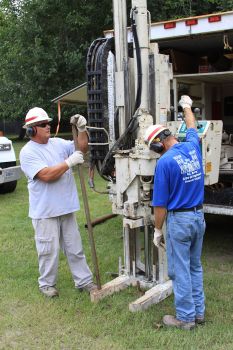Continuous Drive Sampling: Difference between revisions
Rmanwaring (talk | contribs) No edit summary |
Rmanwaring (talk | contribs) No edit summary |
||
| Line 17: | Line 17: | ||
==[[Best Practices Resources]]== | ==[[Best Practices Resources]]== | ||
{{Document Icon}} [[National Engineering Handbook: Chapter 5 - Engineering Geology Logging, Sampling, and Testing]] | {{Document Icon}} [[National Engineering Handbook: Chapter 5 - Engineering Geology Logging, Sampling, and Testing | National Engineering Handbook: Chapter 5 - Engineering Geology Logging, Sampling, and Testing (NRCS, 2012)]] | ||
<!-- In the location of an in text citation, simply enclose the citation as follows: <ref> citation </ref>. Citations will automatically populate. Learn more at https://www.mediawiki.org/wiki/Help:Cite. --> | <!-- In the location of an in text citation, simply enclose the citation as follows: <ref> citation </ref>. Citations will automatically populate. Learn more at https://www.mediawiki.org/wiki/Help:Cite. --> | ||
Revision as of 16:51, 28 October 2022

|
| Operating a Drill Rig |
"This method consists of forcing a tube into soil materials and withdrawing material retained inside the tube. Tubes are driven by use of a drive hammer or pushed using a jack or hydraulic cylinders against the weight of the rig. Continuous drive test holes can be made in clays, silts, and relatively stable materials free from gravel, cobbles, and boulders. The sampler, when withdrawn, acts as a piston in the hole, causing more excessive caving then other methods of boring."[1]
"Although highly recommended for logging purposes, continuous drive sampling represents a slow method of advancing holes if logging is not the primary purpose of the boring. Even minor changes in soil materials are visible when the sample is extruded from the tube. However, when used for logging purposes, the hole should be advanced by other means, such as with hollow-stem augers and tubes that will fit through the inner diameter of the hollow stem augers to provide wall clearance. Continuous drive sampling is generally impractical for advancing holes with diameters larger than 3 inches."[1]
Best Practices Resources
Citations:
Revision ID: 4058
Revision Date: 10/28/2022
